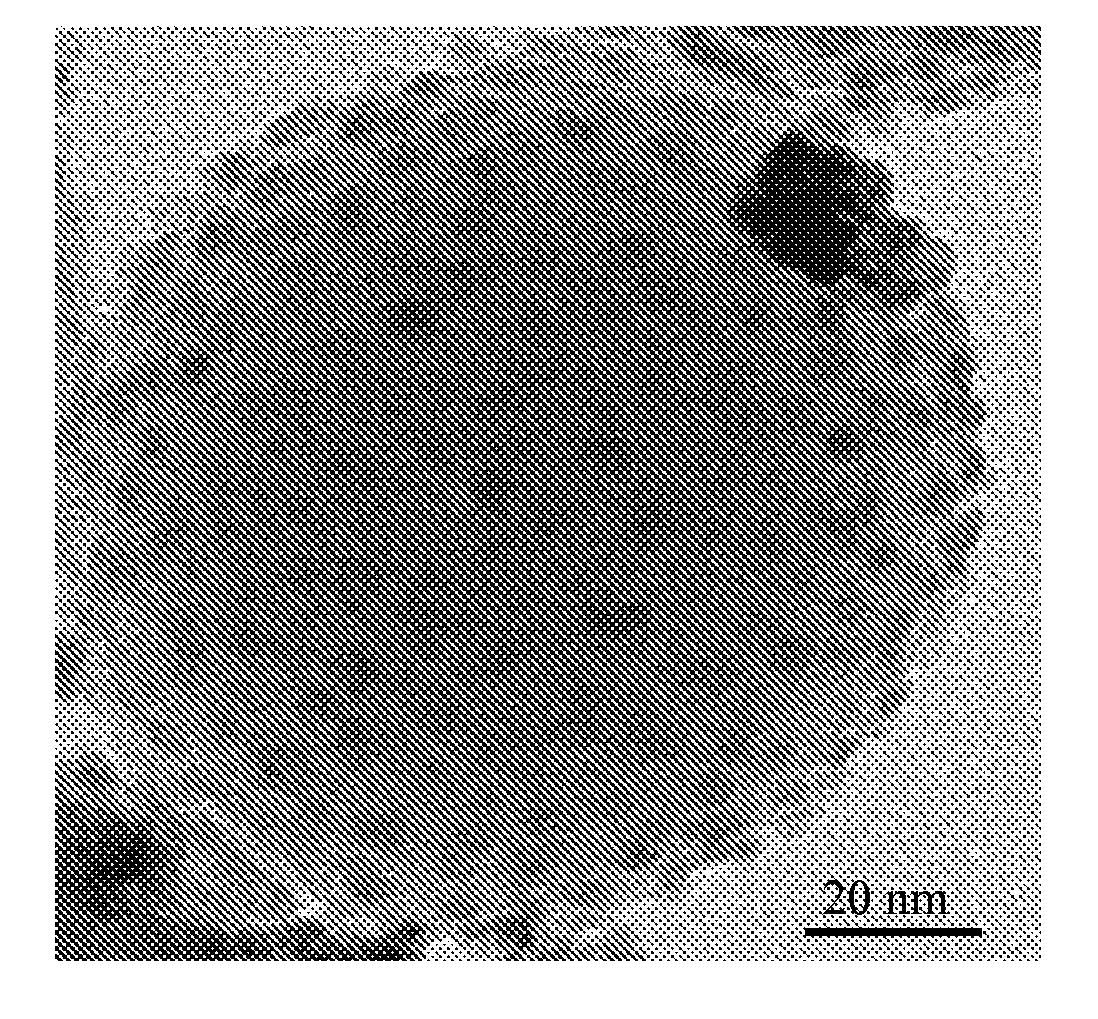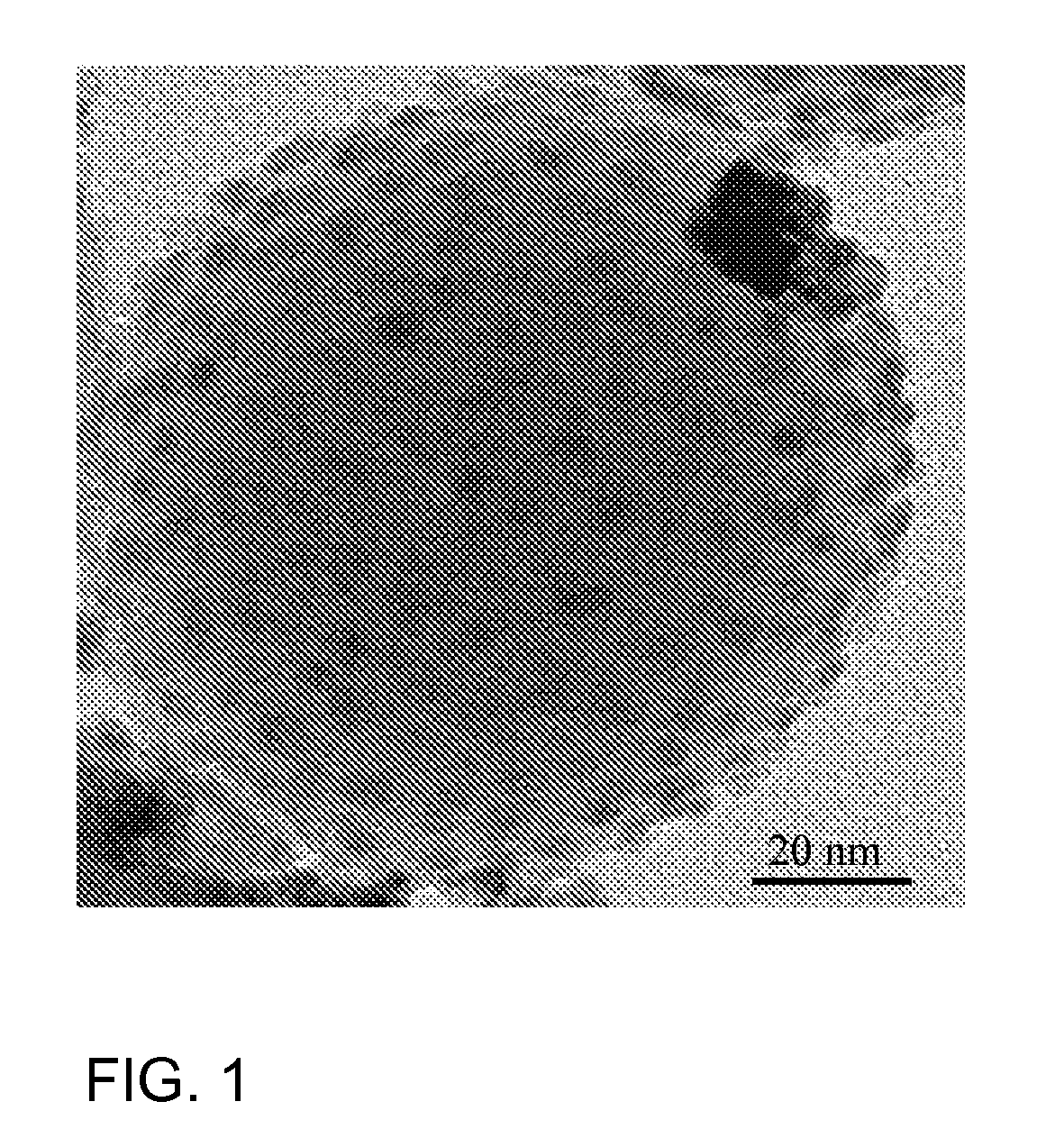Raspberry-type metal oxide nanostructures coated with ceo2 nanoparticles for chemical mechanical planarization (CMP)
a ceo2 nanoparticle and metal oxide technology, applied in silicon oxides, manufacturing tools, other chemical processes, etc., can solve the problems of micro-scratches on the substrate surface, poor surface finishing, and high removal rate, so as to reduce the loading of costly materials, reduce the loading rate of costly materials, and reduce the removal rate
- Summary
- Abstract
- Description
- Claims
- Application Information
AI Technical Summary
Benefits of technology
Problems solved by technology
Method used
Image
Examples
examples 1 to 3
[0106]The Preparation of Raspberry-Type Ceria Coated Silicon Dioxide Particles
example 1
[0107]21.72 g of Cerium (III) nitrate (99%, Sigma-Aldrich) was dissolved in 780 g of water. To this solution, 66.4 g of 45 wt.-% silica sol (SiO2 with particle size of 40-50 nm, Levasil® 100, H.C. Stark) in water was added dropwise to obtain a consistent dispersion. 42 ml of triethylamine (98%, Fluka) was added to the above dispersion in 2 equal batches, under vigorous stirring. The pH of the mixture was about 11. The color of the dispersion turned from purple color to final yellow after stirring for 24 hours in open air at room temperature. The pH of the mixture was about 5 to 6. The final product was purified through centrifugation and then re-dispersed into water to produce the desired slurry. (No calcination).
example 2
[0108]21.72 g of Cerium (III) nitrate (99%, Sigma-Aldrich) was dissolved in 780 g of water. To this solution, 66.4 g of 45 wt % silica sol (Levasil® 100, H.C. Stark) in water was added dropwise to obtain a consistent dispersion. 42 ml of triethylamine (98%, Fluka) was added to the above dispersion in 2 equal batches under vigorous stirring. The pH of the mixture was about 11. The color of the dispersion turned from purple color to final yellow after stirring for 24 hours in open air at room temperature. The pH of the mixture was about 5 to 6. The final product was purified through centrifugation and was then dried under vacuum overnight. The powder was calcined at 200° C. for 4 hrs and then milled with zirconium beads followed by re-dispersion in water to get the desired polishing slurry.
PUM
| Property | Measurement | Unit |
|---|---|---|
| Temperature | aaaaa | aaaaa |
| Temperature | aaaaa | aaaaa |
| Temperature | aaaaa | aaaaa |
Abstract
Description
Claims
Application Information
 Login to View More
Login to View More - R&D
- Intellectual Property
- Life Sciences
- Materials
- Tech Scout
- Unparalleled Data Quality
- Higher Quality Content
- 60% Fewer Hallucinations
Browse by: Latest US Patents, China's latest patents, Technical Efficacy Thesaurus, Application Domain, Technology Topic, Popular Technical Reports.
© 2025 PatSnap. All rights reserved.Legal|Privacy policy|Modern Slavery Act Transparency Statement|Sitemap|About US| Contact US: help@patsnap.com


